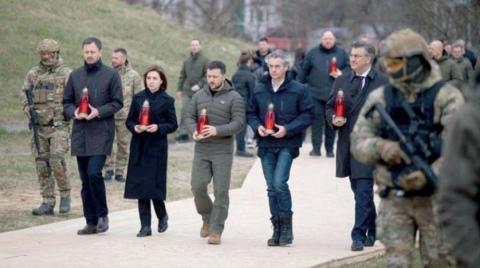
The Libyan army, commanded by Field Marshal Khalifa Haftar, announced last summer the liberation of the city of Benghazi from extremist and terrorist groups. However, dozens of gunmen still remain fortified and besieged in the Sidi Khreibish neighborhood, said sources close to the army.
They estimated their numbers to be 90, but sources close to the besieged said that they were closer to 150.
In the second part of a series of features on the extremist dens in Libya, Asharq Al-Awsat took a closer look at the Sidi Khreibish neighborhood, which has become unrecognizable after years of fighting.
The area, known as Old Benghazi, used to be a cultural and shopping hub. Now its streets are littered with explosives and its empty buildings carry the scars of war.
A military officer accompanied Asharq Al-Awsat on its tour. He said that the gunmen have taken up al-Baladi Hotel as their main headquarters.
“We are monitoring them, but entering the area is difficult at the moment,” he continued.
“There is no doubt that we will eventually get there and regain the position,” he stressed, while explaining that the army will incur great losses in the impending battle because the besieged fighters have booby-trapped “everything” in the area.
The Libyan army has described the gunmen as ISIS members, but a mediator close to the armed groups said that they belong to the so-called “Libya 1 Shield,” which was formed three years ago at the national general conference (former parliament) in order to defend Benghazi.
The military official added that the ISIS terrorists have not only booby-trapped the area, but they have also dug underground tunnels where snipers lie in wait.
“They are surviving on expired food and it would be easy for us to bombard them with airstrikes, but we want them alive,” he declared.
Their capture will be valuable because they will be able to inform authorities about the local terror groups’ ties with international ones that are seeking chaos and destruction in Benghazi.
The mediator meanwhile said that the sides that have embroiled these fighters in the Benghazi war do not want them to leave the Sidi Khreibish battle alive.
“If they do, they will expose their backers, who have involved them in the fighting that has been ongoing throughout Libya since 2014,” he added.
Asked if there were any military personnel among the besieged fighters, he replied there are perhaps two or three, but the rest are civilians from the Libya 1 Shield.
He revealed that there have been previous local and international mediation efforts to end the siege, but they have been thwarted by the Muslim Brotherhood and another group. These two parties have been waging “nonstop” anti-military propaganda, alleging that the army was besieging Sidi Khreibish, he said.
“I think someone is benefiting from the continuation of this problem,” he remarked to Asharq Al-Awsat.
A walk in one of Sidi Khreibish’s neighborhoods reveals colored ribbons along the sidewalks and abandoned buildings.
A red and white ribbon means that areas beyond that point were dangerous. Despite the warning, some families attempted to go back to their homes, away from the military’s protection.
One of these families managed to reach their home, located on the second floor of a residential building on al-Shweikhat street, but they were soon surprised to find that it was in the hands of extremists.
The terrorists eventually withdrew, but not without booby-trapping the house, thereby claiming the life of the entire family.
Majed, one of the family’s neighbors in the four-storey building, said that the family did not heed warnings against entering the area. They ignored the ribbons that the military had placed and mine warnings.
Majed volunteered with the army and become a trained soldier.
He spoke of how ISIS had occupied and later completely destroyed his home.
“On the outside, it looked undamaged, but on the inside it was total destruction,” he recalled.
The building was planted with mines and they are still there.
“Two of my neighbors were killed when they returned to inspect their homes after ISIS’ retreat,” Majed explained.
His brother, Darwish, was also killed in the fighting in Sidi Khreibish.
Despite the destruction, residents and construction workers derive hope from an elderly woman, Hajja Khadija, who remained in Sidi Khreibish throughout the years of the fighting.
With a smile of determination and defiance, one of the workers said: “We ware happy to see residents return to the areas that have been cleared of explosives … We will not forget Hajja Khadija, who remained in her house in spite of the war and death.”
“After the fighting eased, we returned to fix electrical cables and Hajja Khadija used to check up on us to encourage us, bringing with her breakfast and lunch,” he said.












